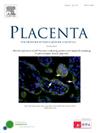暴露于产前母亲压力与表观遗传年龄加速和胎盘细胞组成改变有关:QF2011昆士兰洪水研究
IF 2.5
2区 医学
Q2 DEVELOPMENTAL BIOLOGY
引用次数: 0
摘要
在子宫内暴露于产前母亲压力(PNMS)与一些不良的围产期结局有关,如早产和认知发育紊乱。在怀孕期间,胎盘作为胎儿和母体间室之间的界面,一直被认为在这一过程中发挥作用。我们假设胎盘DNA甲基化(DNAme)可能与自然灾害介导的PNMS有关。方法使用Illumina Infinium MethylationEPIC珠芯片阵列对昆士兰洪水研究(QF2011)队列(n = 105)的胎盘样本进行处理,以评估DNAme。结果总体而言,我们使用线性模型(FDR<;0.05和Δβ>;0.03)没有发现胎盘DNAme与几种应激测量之间的显着关联。虽然我们发现XX胎盘的细胞滋养细胞与合胞滋养细胞比例比XY胎盘略高(p = 0.01),但这种细胞比例的差异与PNMS暴露无关。然而,我们确实观察到胎盘表观遗传年龄加速与所调查的所有三种PNMS类型(客观困难(QFOSS) (p = 0.03),主观痛苦(COSMOSS) (p = 0.03)和母亲认知评价(CONSEQ) (p = 0.0005)评分)之间的关联。结论PNMS对胎盘DNAme的影响并不大,这可能表明胎盘在妊娠期间可以缓冲中等水平的母体应激。目前尚不清楚胎盘表观遗传年龄加快对胎儿发育或围产期结局的影响,需要进一步研究。本文章由计算机程序翻译,如有差异,请以英文原文为准。
Exposure to prenatal maternal stress is associated with epigenetic age acceleration and altered cell composition in the placenta: The QF2011 Queensland Flood Study
Background
Exposure to prenatal maternal stress (PNMS) in utero has been associated with several adverse perinatal outcomes, such as pre-term birth and perturbed cognitive development. As the interface between the fetal and maternal compartments during pregnancy, the placenta has been postulated to play a role in this process. We hypothesized that placental DNA methylation (DNAme) may be altered in association with natural disaster-mediated PNMS.
Methods
Pooled placental samples from the Queensland Flood Study, or QF2011, cohort (n = 105) were processed for assessment of DNAme using the Illumina Infinium MethylationEPIC BeadChip array.
Results
Overall, we did not find significant associations between placental DNAme and several stress measurements using linear modelling (FDR<0.05 and Δβ>0.03). While we found that XX placentas had slightly higher predicted cytotrophoblast to syncytiotrophoblast cell ratios than XY placentas (p = 0.01), this difference in cell ratio was not associated with PNMS exposure. However, we did observe associations between placental epigenetic age acceleration and all three types of PNMS investigated (objective hardship (QFOSS) (p = 0.03), subjective distress (COSMOSS) (p = 0.03), and maternal cognitive appraisal (CONSEQ) (p = 0.0005) scores).
Conclusion
The lack of large global impacts of PNMS on placental DNAme possibly indicates that the placenta can buffer moderate levels of maternal stress during pregnancy. It remains unclear what the impact of increased placental epigenetic age acceleration is on fetal development or perinatal outcomes and will require further investigation.
求助全文
通过发布文献求助,成功后即可免费获取论文全文。
去求助
来源期刊

Placenta
医学-发育生物学
CiteScore
6.30
自引率
10.50%
发文量
391
审稿时长
78 days
期刊介绍:
Placenta publishes high-quality original articles and invited topical reviews on all aspects of human and animal placentation, and the interactions between the mother, the placenta and fetal development. Topics covered include evolution, development, genetics and epigenetics, stem cells, metabolism, transport, immunology, pathology, pharmacology, cell and molecular biology, and developmental programming. The Editors welcome studies on implantation and the endometrium, comparative placentation, the uterine and umbilical circulations, the relationship between fetal and placental development, clinical aspects of altered placental development or function, the placental membranes, the influence of paternal factors on placental development or function, and the assessment of biomarkers of placental disorders.
 求助内容:
求助内容: 应助结果提醒方式:
应助结果提醒方式:


